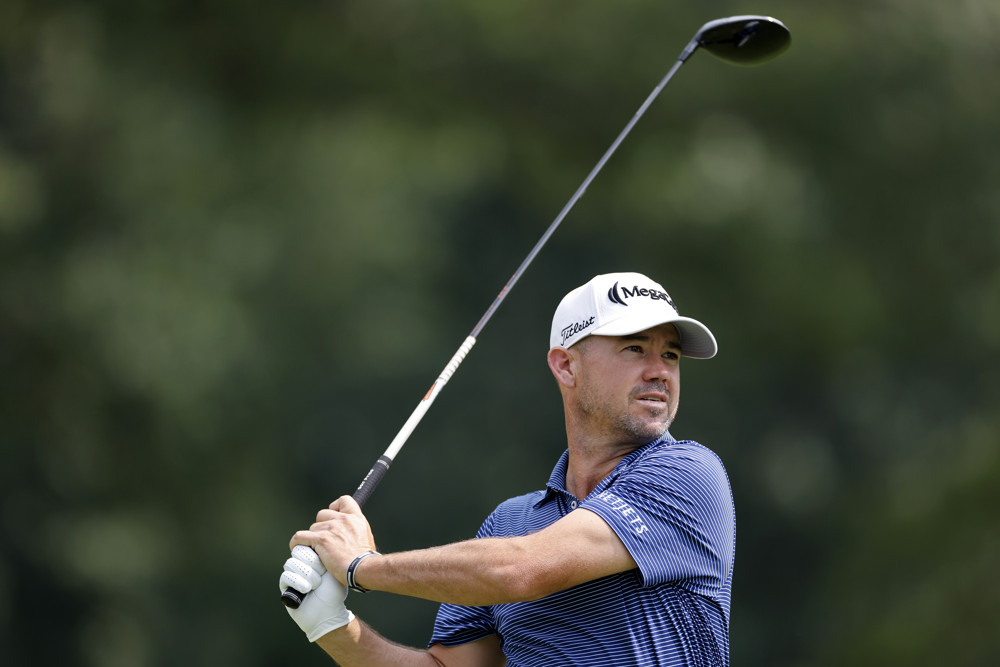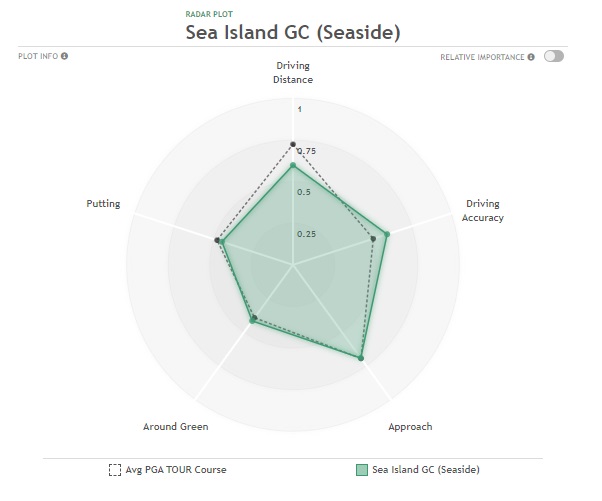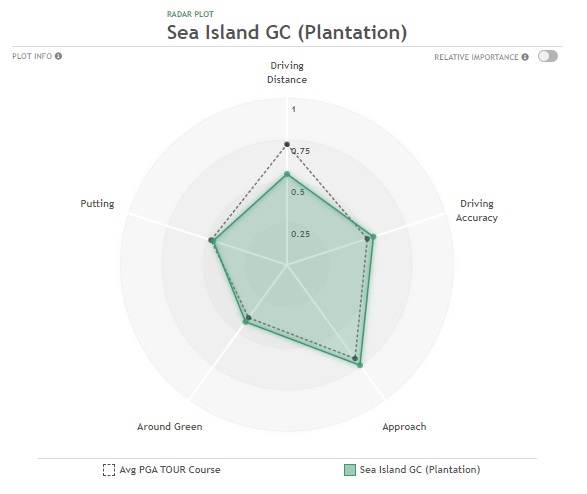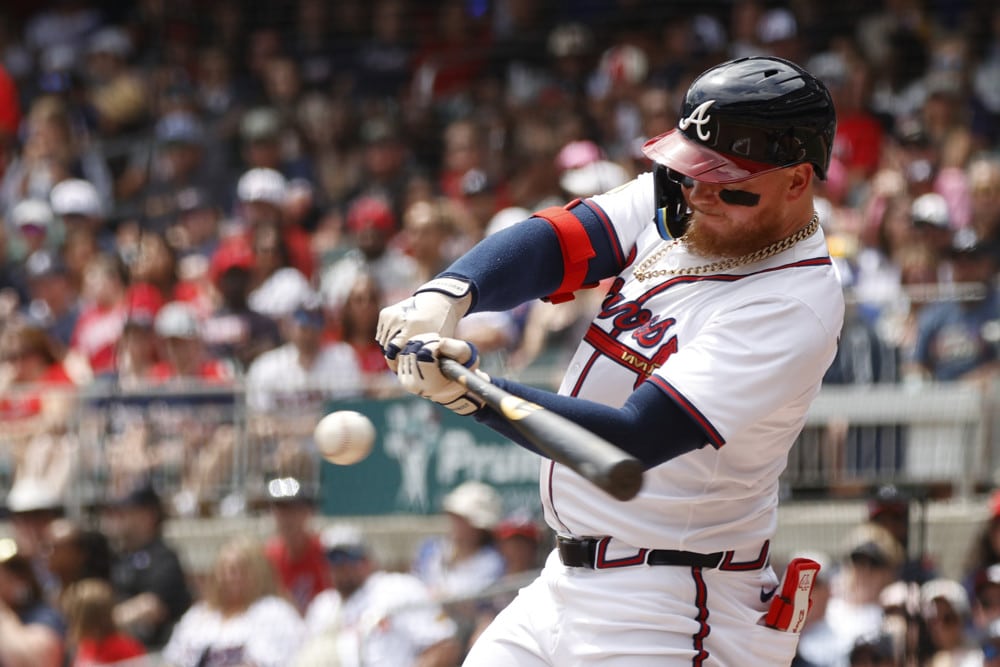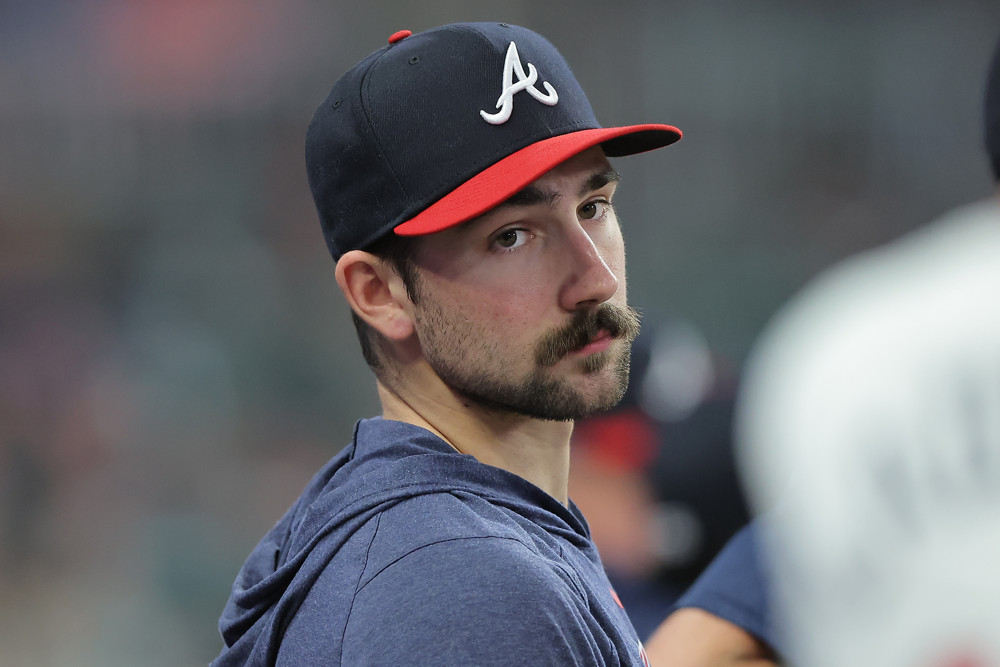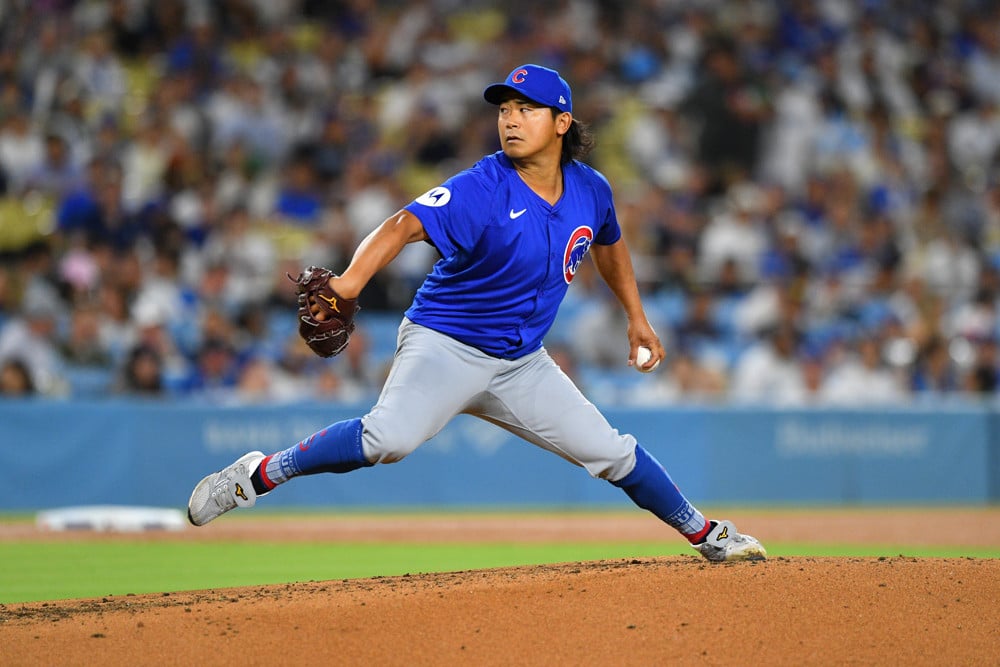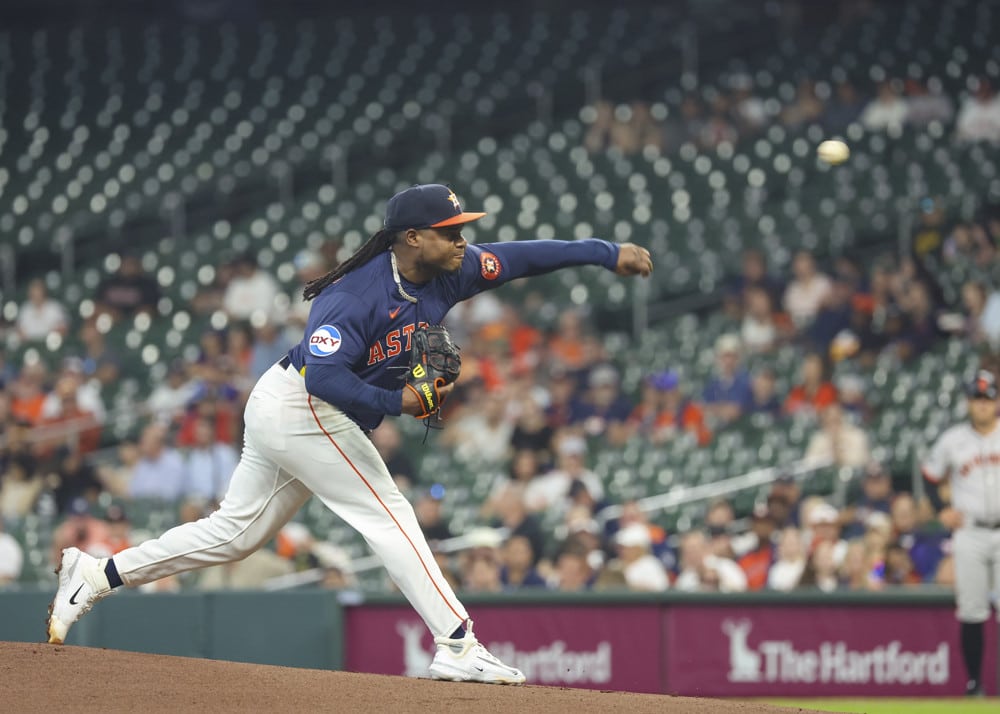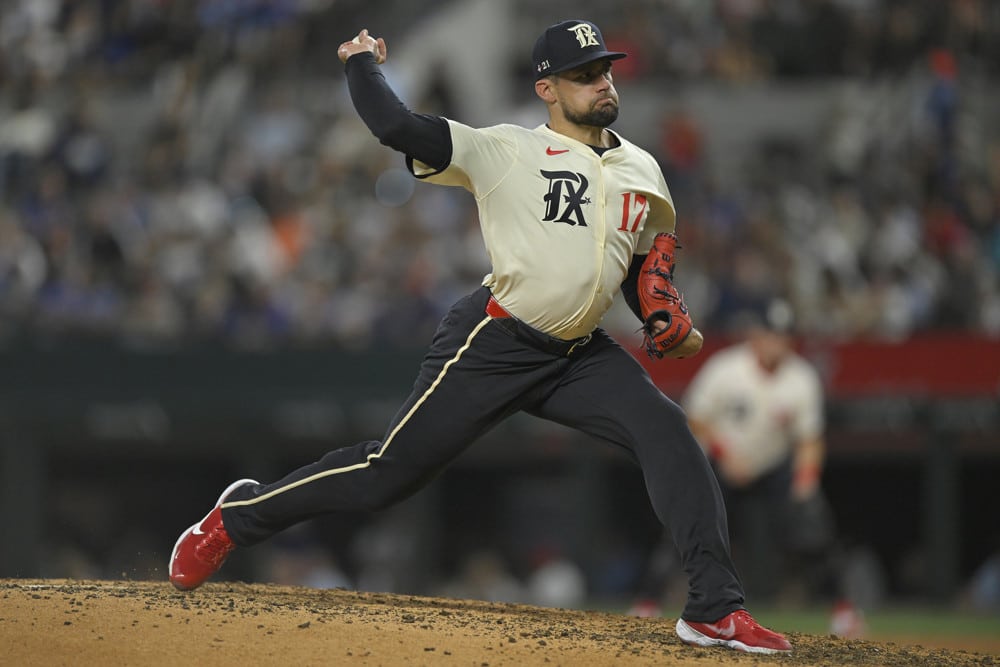The final event of FedEx Cup fall is here. This is the last chance for players on the fringes of the PGA Tour to secure their spot for the 2024 season. They’ll try and keep their job this week at Sea Island Golf Club and Resort for the 2023 RSM Classic on Saint Simons Island, Georgia. As always, here is your early deep dive on the 2023 RSM Classic and a preview of how to bet.
2023 RSM Classic Preview
The Field
The last few weeks have featured pretty weak fields. However, the finale of the FedEx Cup fall finally has more than a handful of decent players in the field.
Most players who call Sea Island home or played for the University of Georgia will make an appearance this week at the 2023 RSM Classic. They include players such as Harris English, Brian Harman, Russell Henley, Chris Kirk, Kevin Kisner, Matt Kuchar, J.T. Poston, Webb Simpson and Brendon Todd. All these players are household names. And all of them are essentially the cookie-cutter template of how to win at Sea Island – short irons and putting.
Also in the field include Ludvig Aberg, Corey Conners, Billy Horschel, Si Woo Kim, Denny McCarthy, Alex Noren, and Cameron Young.
For the full field, click here.
The Golf Courses
Two golf courses host the RSM Classic. Players will play their first two rounds on both the Seaside Course and the Plantation Course. The rest of the tournament is played on the Seaside Course after the cut. The PGA Tour only maintains ShotLink data on the Seaside Course, the tougher of the two.
The Sea Island Golf Club and Resort was first developed in 1926 after Sea Island Company founder, Howard Coffin, purchased a former cotton plantation on Sea Island. Coffin loved the game of golf, and he brought in famed Australian amateur golfer and architect Walter Travis. Travis was a three-time U.S. Amateur Tournament winner, and after his playing days, he developed several private country clubs around the country. Travis employed classic Scottish Links styles to his golf courses. He is also most famous for small “chocolate drop” mounds in the fairways and for small, elevated greens.
However, midway through the design of the first nine holes of the Plantation Course, Travis died unexpectedly. Not to be deterred, Coffin brought in another famous architect, Harry S. Colt (of Royal Portrush and Royal Liverpool fame), to finish Travis’s vision and complete the nine hole Plantation and the nine hole Seaside. Several other nine hole tracks were created in the decades that followed. This included the Retreat and the Marshside.
In 1977, Davis Love Jr. moved to Sea Island to become the head golf pro at the Sea Island Golf Club and Resort, bringing along his son – Davis Love III. The Love family grew up there, and Love III career flourished. From his success, Love III was able to invest valuable resources into the club to make it a top-notch performance center, and he wielded significant influence on the resort. Sea Island is truly Davis Love III’s Valhalla.
In 2006, Sea Island began hosting a regular stop on the PGA Tour in the fall, first named the McGladrey Classic and now known as the RSM Classic in its current incarnation.
The Seaside Course
In 1999, the Sea Island Company and Davis Love III tasked Tom Fazio to redesign the Seaside Course and the Marshside Course and merry the two nine hole tracks. Fazio did just that and gave a facelift to both golf courses, including renovating the bunkers into a classic clamshell style, shrinking the greens, and adding exposed sand dunes off the fairways.
The front nine is the old Marshside Course and plays, appropriately enough, around the edges of a huge marsh. The back nine is the old Seaside Course next to the bay. This golf course is not an easy one for most amateurs. Trouble lurks for the high handicapper everywhere on the golf course, with marshes, water hazards, and large sandy waste areas ready to eat up errant shots. However, with some of the widest fairways on the PGA Tour, professionals have no problem keeping it out of trouble off the tee.
The greens on the Seaside Course are fairly large. They average about 7,200 sq. feet in area. That’s a very generous target for players to hit into. However, many greens funnel errant shots into collection areas off of tight Bermuda lies. It’s almost easier for amateurs to miss the greens by a mile. It gives them a better chance of chipping off in the rough where the ball might be sitting up and on flatter surfaces.
As mentioned previously, players will play three of their four rounds on the Seaside Course.
The Plantation Course
The Plantation Course reopened in October 2019 after a complete facelift. It has undergone a full redesign by Davis Love III’s golf design company to bring the Plantation Course back to the roots of Walter Travis’s original layout.
This wasn’t just a simple redesign with a few new bunkers and lengthened holes. This was a complete transformation of the golf course. Almost every hole was tinkered with. Many holes saw their fairway bunkers reduced in size but more rectangularly shaped, similar to that of classic Scottish Links design. The greens were entirely rebuilt and are more squared off than before. Other hallmark Travis features, such as the chocolate drop mounds, are presented across the golf course. There’s also a principal-nosed bunker complex in the middle of the 10th fairway.
This is an entirely new golf course, and it seems like Love and his company hit it out of the ballpark. Love’s design company did a good job with the redesign of the Plantation Course. It’s a creative track that has many of the basic principles and quirks of classic Scottish Links golf. From the overhead view, the golf course requires a great mix of thoughtfulness and creativity.
Overall, the golf courses provide a relaxing viewing experience with vistas of the surrounding marshland and backwater bay. It’s not the best set of golf courses on the PGA Tour. But it provides for some nice easy viewing should a viewer stumble onto the (what little they offer) coverage.
Betting Strategies
For any information regarding strokes gained data, only the Seaside Course will be referred to. There is no ShotLink data available for the Plantation Course. However, this column will discuss general information about the Plantation Course where applicable.
General Information:
Yardage/Par:
- Seaside Course: Par 70, 7,005 Yards
- Plantation Course: Par 72, 7,060 Yards
Both golf courses are some of the shortest on the PGA Tour. In 2022, the Seaside Course ranked as the 3rd shortest golf course played on the season. Considering the Plantation Course is also barely over 7,000 yards long, it also ranks as one of the shortest on the schedule.
Agronomy
- Seaside Course: TifEagle Bermuda Greens (7,200 sq. feet on average – larger than PGA Tour average), TifDwarf Bermuda Collars, Poa Trivialis Overseed Approaches, Perennial Rye Overseed Fairways and Rough.
- Plantation Course: TifEagle Bermuda Greens (6,100 sq. feet on average – slightly larger than PGA Tour average), TifGrand Bermuda Collars and Approaches, Perennial Rye Overseed Fairways, TifTurf Bermuda Rough (1.5″)
Other golf courses on the PGA Tour that feature TifEagle Greens include:
- Port Royal Golf Club (Bermuda Championship)
- Bay Hill Golf Club (Arnold Palmer Invitational)
- PGA National (Honda Classic)
- Kapalua (The Sentry)
Both golf courses feature almost identical agronomy with just a few subtle differences. The approaches (aka the short grass within 50 or so yards from the green) are Bermuda at the Plantation Course, while it’s an overseed on the Seaside Course. In addition, the Plantation Course features Bermuda rough, while the Seaside Course rough is overseeded with rye.
Scoring Averages
- Seaside Course
- 2022: -1.05
- 2021: -1.01
- 2020: -1.36
- 2019: -1.10
The Seaside Course is annually one of the easiest on the PGA Tour. Since 2015, the Seaside Course ranks as the 25th easiest of all golf courses played. In 2022, the Seaside Course ranked as the 16th easiest of 43 golf courses played. While nothing is all that challenging about the Seaside Course to a professional, it provides little resistance with its Par 3’s and 4’s. In 2022, the Par 3’s and Par 4’s ranked as the 4th and 13th easiest on the PGA Tour, respectively.
- Plantation Course
- 2022: -0.24
- 2021: -1.32
- 2020: -0.67
- 2019: -1.56
Like its counterpart to the west, the Plantation Course also is annually one of the easier golf courses on the PGA Tour.
However, it is at this point that we need to discuss the variable of wind and its impact on each golf course. Or, to put it another way, where one would want to play should the golf courses receive bad weather. Both golf courses play much, much tougher in adverse conditions.
Here are the scoring splits between Rounds 1 and 2 at each golf course since 2019:
- Seaside Course
- 2022: +0.36/-1.32
- 2021: -3.67/+0.94
- 2020: -0.12/-1.33
- 2019: -0.58/-2.28
- Plantation Course
- 2022:+0.21/-0.69
- 2021: -3.31/+0.68
- 2020: +0.59/-1.95
- 2019: -1.28/-1.81
Based on the splits above, it would appear that one would prefer to play the Seaside Course on the more benign days. The scoring averages on days where there doesn’t appear to be any significant weather issues were, for the most part, slightly better on the Seaside Course than it was on the Plantation Course.
However, it would appear that one would prefer to play the Plantation Course in worse weather. The scoring averages, though still difficult, were slightly better on the Plantation Course on days that appeared to have weather issues than they were on the Seaside Course.
This makes sense, considering the layout of each golf course. The Plantation Course is more inland than the wide-open Seaside Course is. It’s a little more protected from the elements, primarily due to its more tree-lined nature. Therefore, especially in windy conditions, one would want to take on the Plantation Course on bad weather days (which, based on the current forecast, it appears that Thursday might be brutal).
Par 3’s
Here are the yardages for the Par 3’s on each golf course at the 2023 RSM Classic (per the 2022 tournament)
- Seaside Course
- No. 3: Average Length – 202.8 Yards
- No. 6: Average Length – 176.8 Yards
- No. 12: Average Length – 211.5 Yards
- No. 17: Average Length – 187.8 Yards
- Plantation Course
- No. 3 – 219 Yards
- No. 6 – 156 Yards
- No. 11 – 216 Yards
- No. 16 – 158 Yards
Overall, there’s a fairly even distribution between longer Par 3’s, shorter ones, and middle-length ones.
Par 4’s
Here are the yardages for the Par 3’s on each golf course at the 2023 RSM Classic (per the 2022 tournament)
- Seaside Course
- <375 Yards – 6.3%
- 375-425 Yards – 52.1%
- 425-475 Yards – 41.7%
- 475+ Yards – 0.0%
- Plantation Course
- <375 Yards – 4 (40%)
- 375-425 Yards – 2 (10%)
- 425-475 Yards – 3 (30%)
- 475+ Yards – 1 (10%)
As the overall scorecard suggests, this is a very short collection of Par 4’s. Almost 60% of the Par 4’s played on the Seaside Course are under 425 yards. And half of them are under 425 yards on the Plantation Course. And they’ll only have to play one hole all week that will play more than 475 yards, which is the 9th on the Plantation Course.
Par 5’s
Here are the yardages for the Par 3’s on each golf course at the 2023 RSM Classic (per the 2022 tournament)
- Seaside Course
- No. 7: Average Length – 581.8 Yards
- No. 15: Average Length – 547.8 Yards
- Plantation Course
- No. 4 – 623 Yards
- No. 8 – 529 Yards
- No. 14 – 550 Yards
- No. 18 – 560 Yards
There’s one very long Par 5 over on the Plantation Course. However, most everyone shouldn’t have too much difficulty getting to the green in two on any of the Par 5’s at Sea Island.
From this point forward, only the Seaside Course will be analyzed, as there is no ShotLink data from the Plantation Course to parse through.
Off The Tee
Of all the areas of the game, off the tee seems to be the toughest aspect of the Seaside Course. Of all golf courses played on the PGA Tour since 2015, the Seaside Course ranks 38th out of 86 in terms of difficulty. Last year, it ranked 15th out of 43 golf courses played on the PGA Tour in terms of difficulty. This is despite some of the widest fairways on the PGA Tour and an average driving accuracy rate of nearly 71% since 2015.
So what makes it difficult off the tee? It’s because of what happens on the off chance one does miss a fairway. Over 10% of all tee shots that miss a fairway on the Seaside Course incur a penalty stroke. Anyone who sprays their tee shot off-line stands a very good chance of hitting it into one of the many marshes on the golf course. And when it gets windy, the cross winds certainly can carry the tee shots to undesirable locations.
However, because of this and the overall short nature of the golf course, players often keep the driver in the bag and instead opt for fairway metals off the tee. Since 2015, the average distance of all drives at the Seaside Course is only 280 yards. That’s the 10th shortest of all golf courses played during that stretch.
Overall, the Seaside Course is not one where power is an advantage. That’s why this golf course is one of the few where players like Kevin Kisner can still compete.
Approach Shots
The approach shots on the Seaside Course are some of the easiest the professionals will have all year long. Of all golf courses played since 2015, the Seaside Course ranks as the 22nd easiest golf course for approach shots. And in 2022, it ranked as the 14th easiest for approach shots. And since 2015, the green in regulation rate for the field is 74.1%. Only the Plantation Course at Kapalua, Trinity Forest, and St. Andrews have featured higher green in regulation rates since then.
It is very often that players find themselves in the fairway holding a short iron into a large green. Put a professional player in this situation many times in a tournament, and they’ll likely put up very good scores.
Speaking of which, here is the approach shot distribution chart at the Seaside Course at the 2022 RSM Classic (per DataGolf):
Only 1 in 5 shots will come from over 200 yards at the Seaside Course. And about 70% of them will come from between 100-200 yards. This week is a test of short irons and mid-irons on the Seaside Course.
Around The Green
Overall, the Seaside Course isn’t difficult around the green, either. Since 2015, the Seaside Course ranks as the 19th easiest around the green on the PGA Tour. Last year, it ranked as the 16th easiest out of 43 golf courses played. However, in the two years before that, it ranked as the 4th and 9th easiest, respectively.
While there are some short grass collection areas, they’re overseeded with poa trivialis. That grass can be a little sticky to try and chip off of, but it’s not as difficult as trying to clip a ball perfectly off of tight Bermuda. And the rough at the Seaside Course isn’t penal at all. Nor are the greenside bunkers, which last year ranked as the 3rd easiest to get up and down from.
Putting
Other than the oddball year of 2021, putting at the Seaside Course isn’t tremendously difficult. Of all golf courses played on the PGA Tour since 2015, the greens on the Seaside Course rank as the 26th easiest. And last year, they ranked as the 4th easiest to putt on.
Windy conditions might be a reason why putting can sometimes be difficult on the Seaside Course because it is so open to the elements. But otherwise, players roll in birdie putts with ease at the golf course. This is certainly a golf course for a good putter, especially on slow Bermuda surfaces.
Predictive Skillsets
Here are the predictive skillset charts for both the Seaside Course and the Plantation Course (per DataGolf). These charts will preview what types of players should excel at the 2023 RSM Classic:
Both skillset charts are quite similar. There is almost no correlation to success at Sea Island through distance. However, typically more accurate players have tended to fare better at Sea Island than they do on the average PGA Tour golf course.
There’s also a slightly higher correlation to success from those who are good around the green than those who aren’t. However, this is probably more to do with the profile of an accurate player that tends to do well at Sea Island because they’re also, typically, good around the green.
Here are some golf courses played within the last 3 years on the PGA Tour that have similar skillset charts that Sea Island has (per DataGolf). These golf courses are a collection of solid comparables to identify course fits.
- The Concession Golf Club
- Innisbrook Resort
- Albany
- TPC Southwind
- TPC Twin Cities
- Muirfield Village Golf Club
- Port Royal Golf Course
- Detroit Golf Club
- TPC Sawgrass
- Harbour Town Golf Links
- TPC Deere Run
- East Lake Golf Club
- The Summit Club
- Austin Country Club
In Tournament Strokes Gained
Here is a distribution chart of the variance in total strokes gained based on tournament performance. This chart demonstrates what forces have an influence on how a player separates themselves from the field (per DataGolf):
Based on what’s been described above, how one separates themselves from the field on the Seaside Course isn’t surprising. There’s a greater ability to gain more strokes on the field through one’s performance off the tee than there is at the average PGA Tour event. This is primarily accomplished by hitting more fairways than your opponents and avoiding penalty areas more often than the opponents.
In addition, there is a greater ability to gain more strokes on the field through one’s performance putting than there is at the average PGA Tour event. In ideal weather conditions, this tournament can become a birdie fest. Finding a hot putter is key to doing well in the RSM Classic.
Lastly, there is less ability to gain strokes on the field through approach play and around the green than in the average PGA Tour venue. For approach play, it’s likely due to the abundance of short irons from the fairway that everyone has. It’s harder to do something significantly better than the field with a short iron in hand than it would be with a longer approach shot. And the conditions around the green aren’t challenging at all, even to the worst scramblers.
Follow these tips in this preview, and one should put together a solid DFS lineup and betting card for the 2023 RSM Classic.


